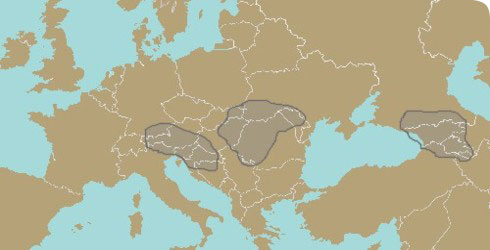Distribution
Distribution
Scopolia carniolica occurs in alpine regions of central and south-eastern Europe. Its geographical distribution is not continuous and consists of three isolated areas:
- south-western part of the range covers areas including Slovenia, Austria, Northern Italy, Croatia and Serbia
- south-eastern fragment includes Romania, Hungary, Slovakia, Southern Poland, Ukraine and Moldova
- the caucasian part comprises the area between the Black and Caspian Seas with countries like Georgia, Armenia and Azerbaijan
A similar pattern of distribution is observed between S. carniolica and S. japonica which occur in Europe and Japan respectively.
Such geographical disjunction characterises plants that occurred in the wider Eurasian area in the Tertiary period - a warm geological era.
After periods of glaciation in the Quaternary period these plants have survived in isolated refuges that were not covered by ice.
Because of this relict character Scopolia carniolica is a protected species in many countries within its distribution range.
Ecology
- Scopolia carniolica is a mountainous plant that prefers damp, rocky and slightly shady beech forests, usually on calcareous soils at altitudes up to 1700m above sea level.
- in lower altitudes the plant can be found in humid places along streams and river valleys in hornbeam and ash forests.
Toolbox
Glossary
Calyx
Group of sepals.
Corolla
Group of petals.
Ovules
Structures that develop into seeds when fertilised.
Parasympathetic
Part of the nervous system that regulates muscle contraction.
Relict species
Species that were formerly widespread but now only occupy small areas.
Rhizome
Underground stem of a plant.
